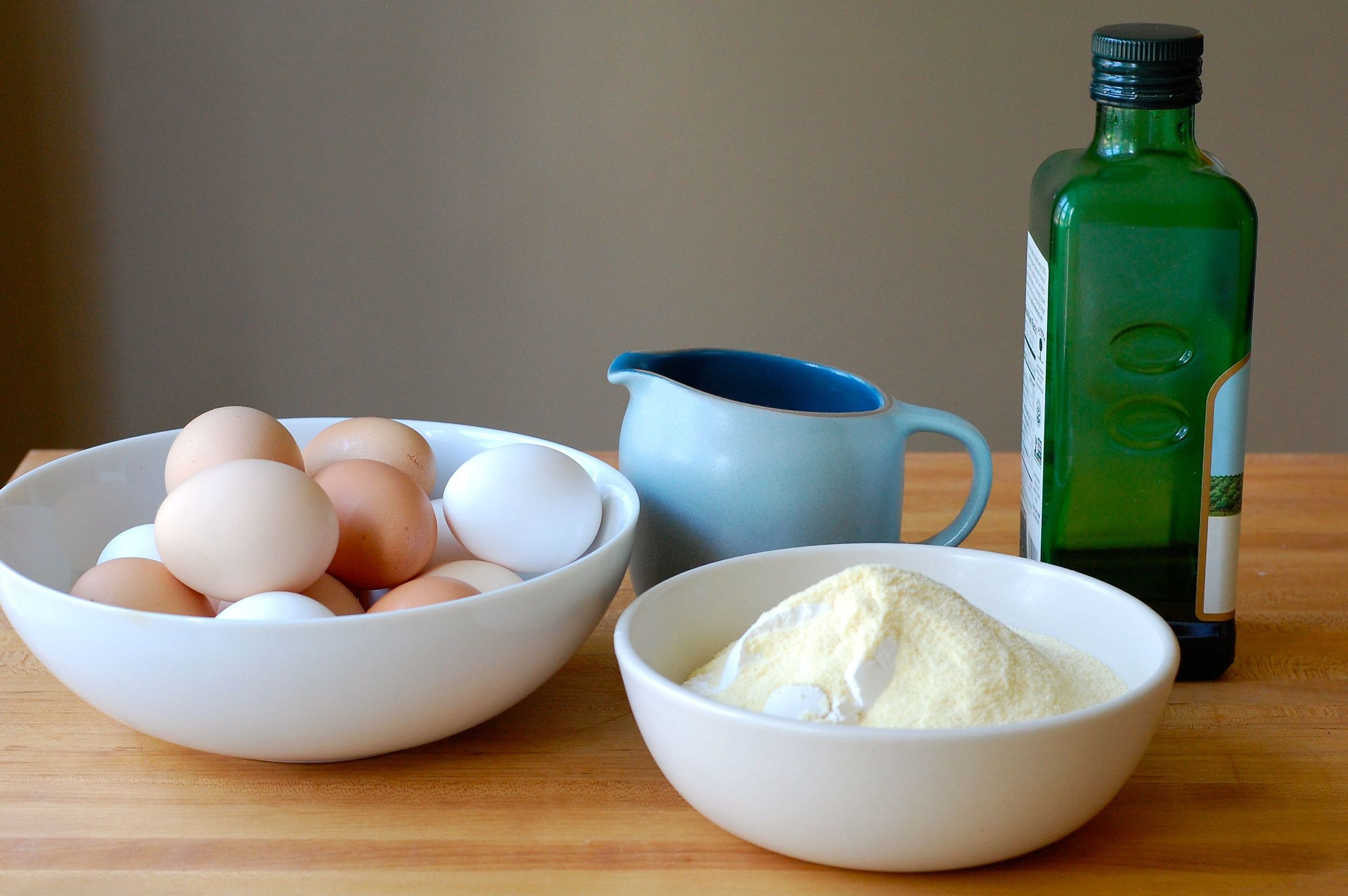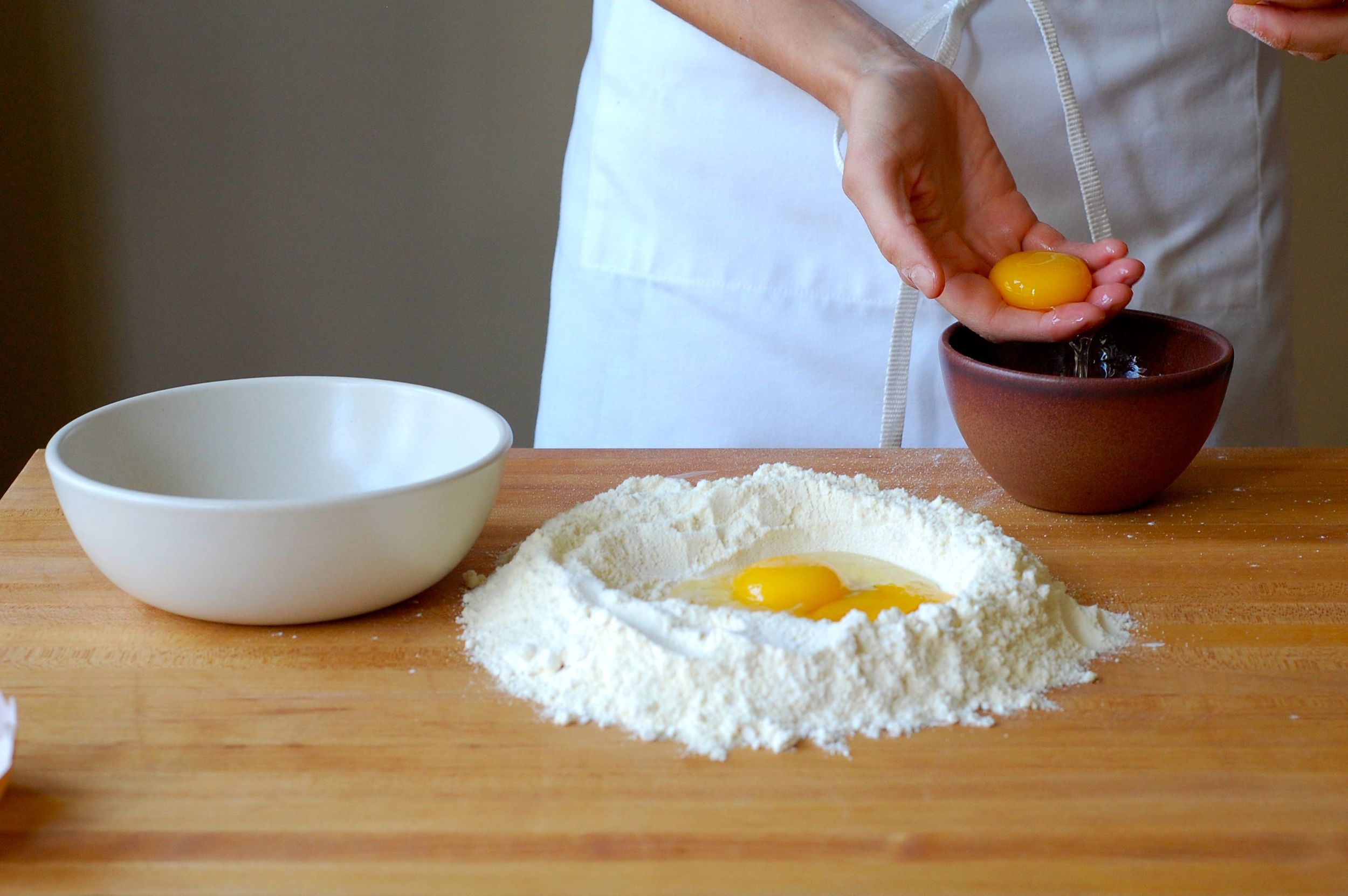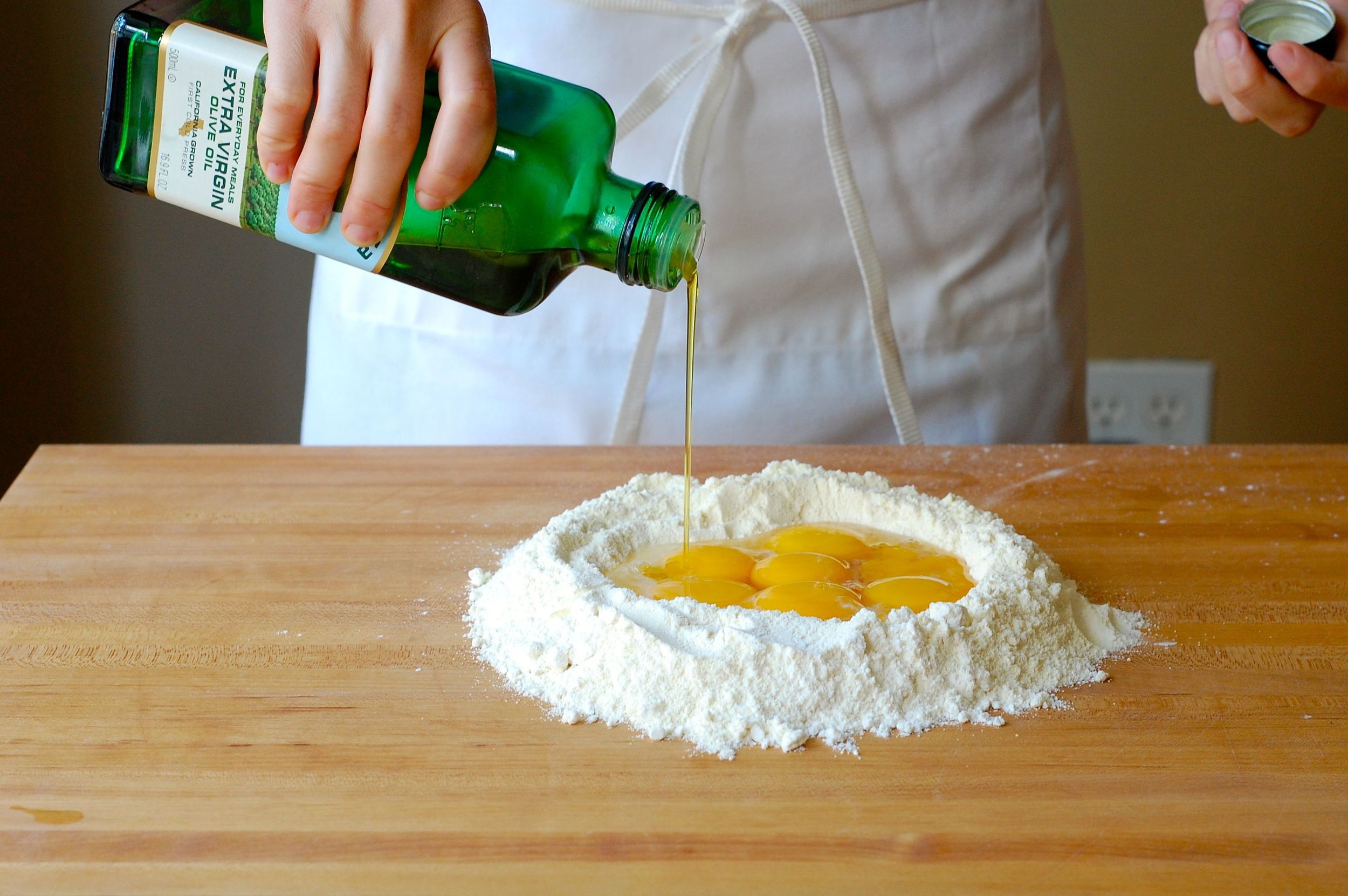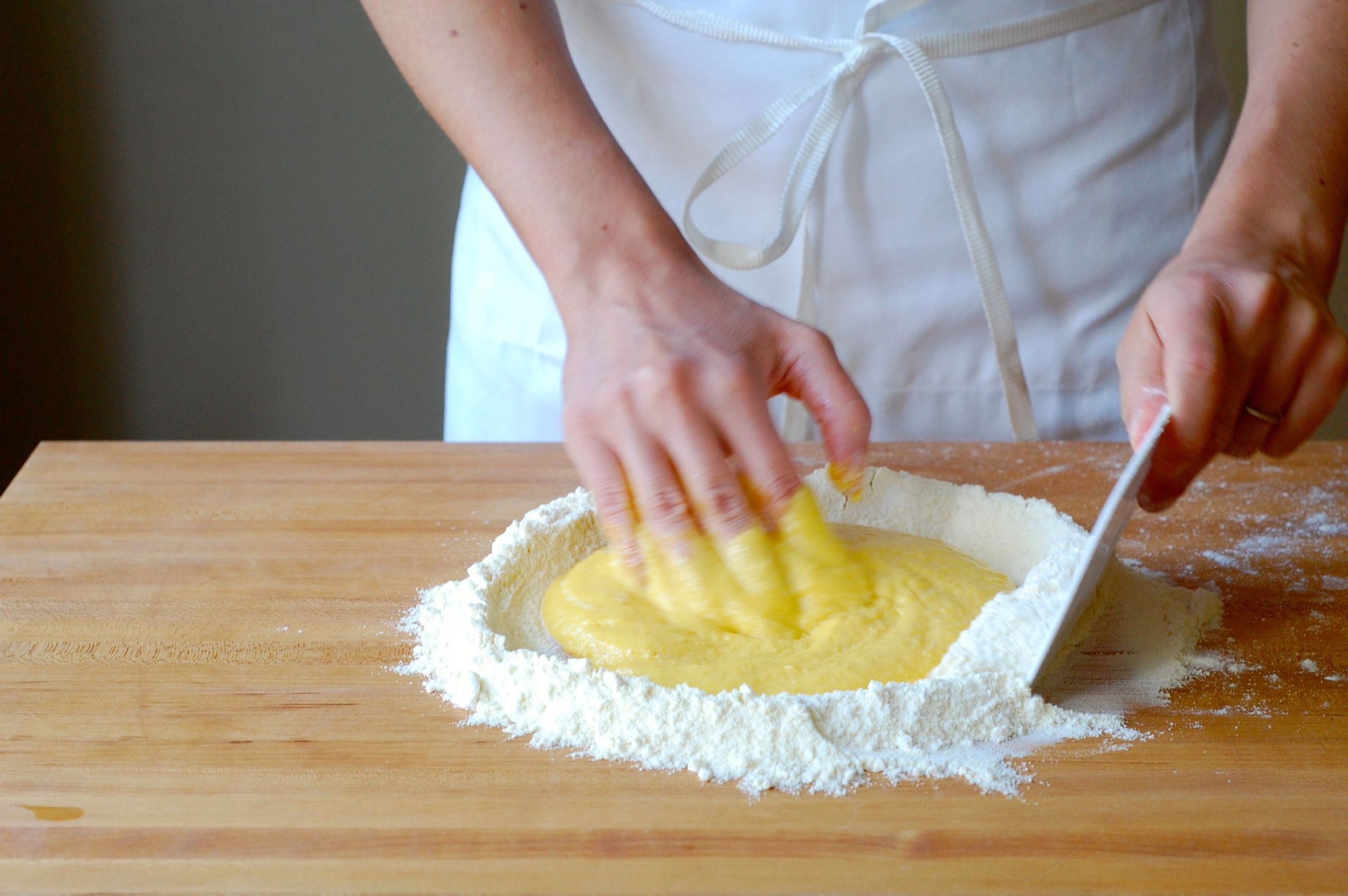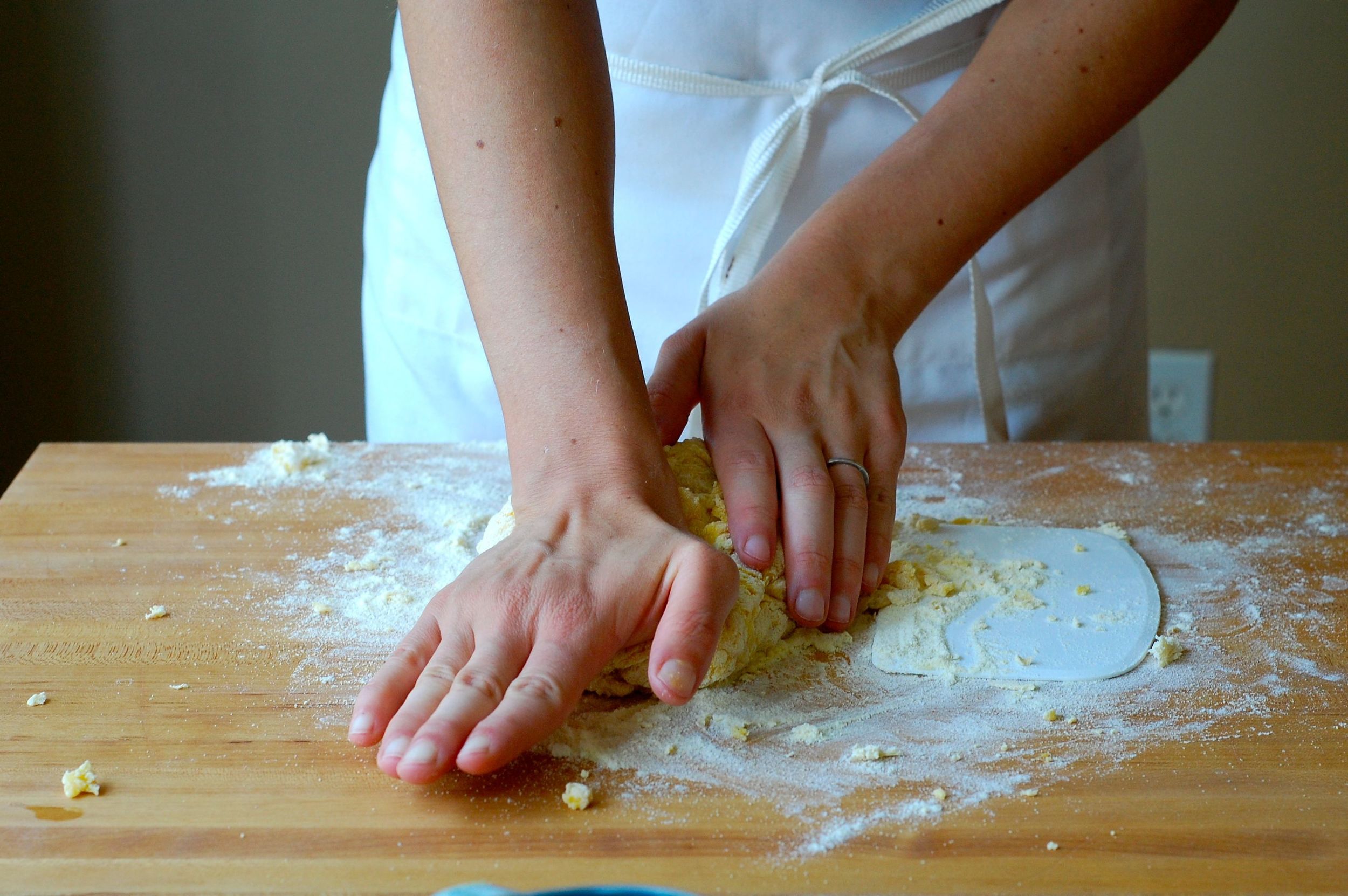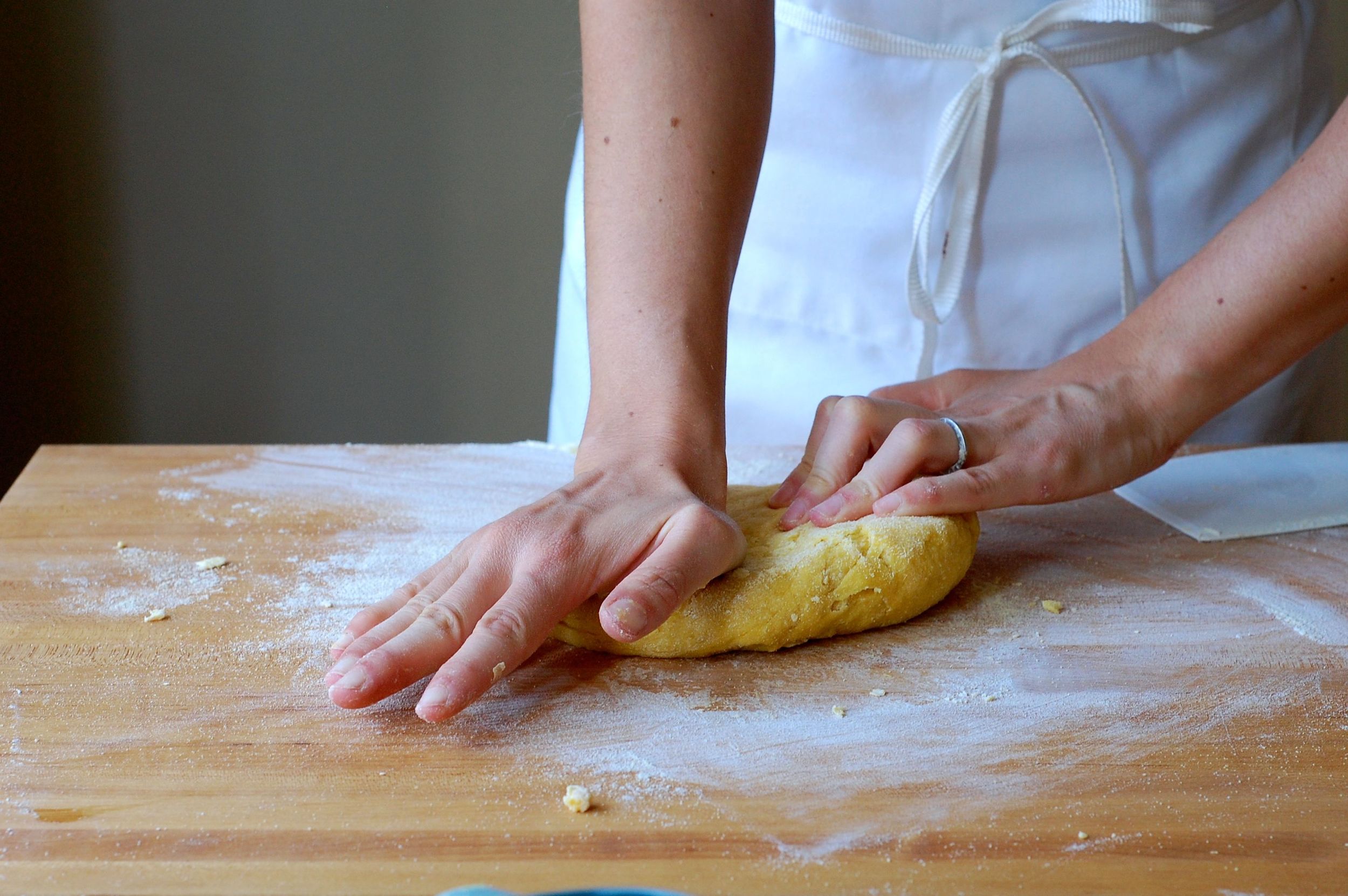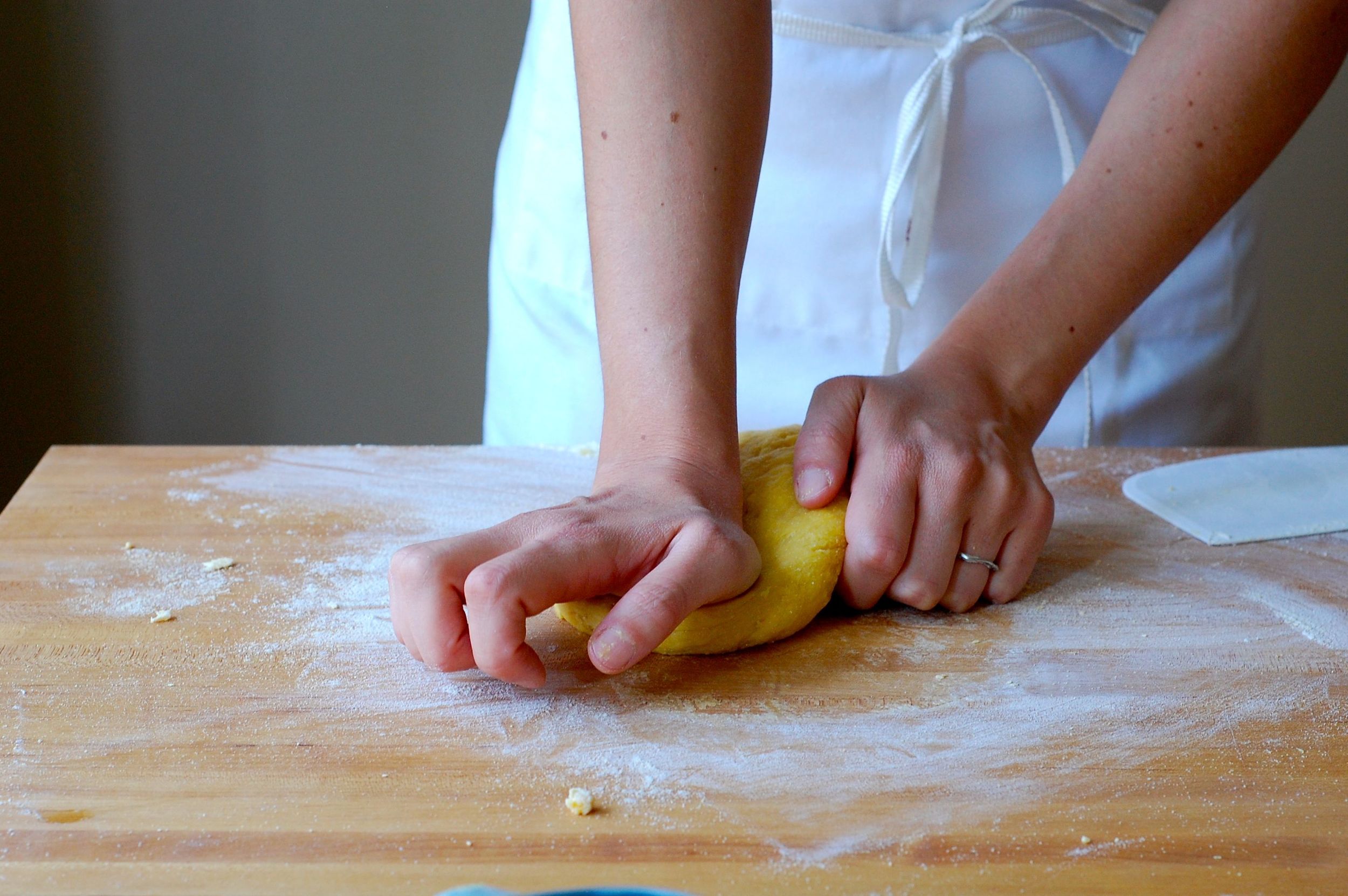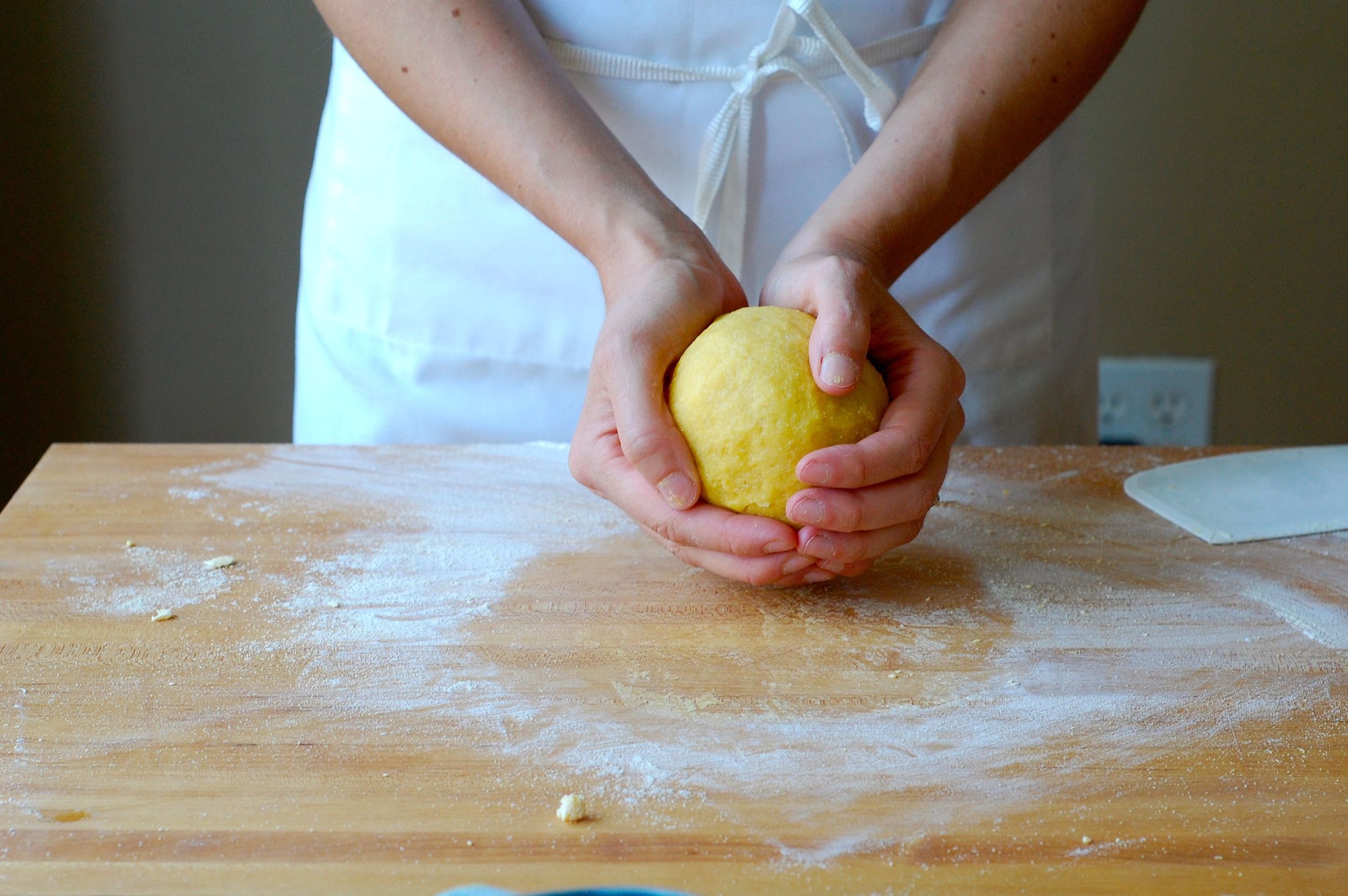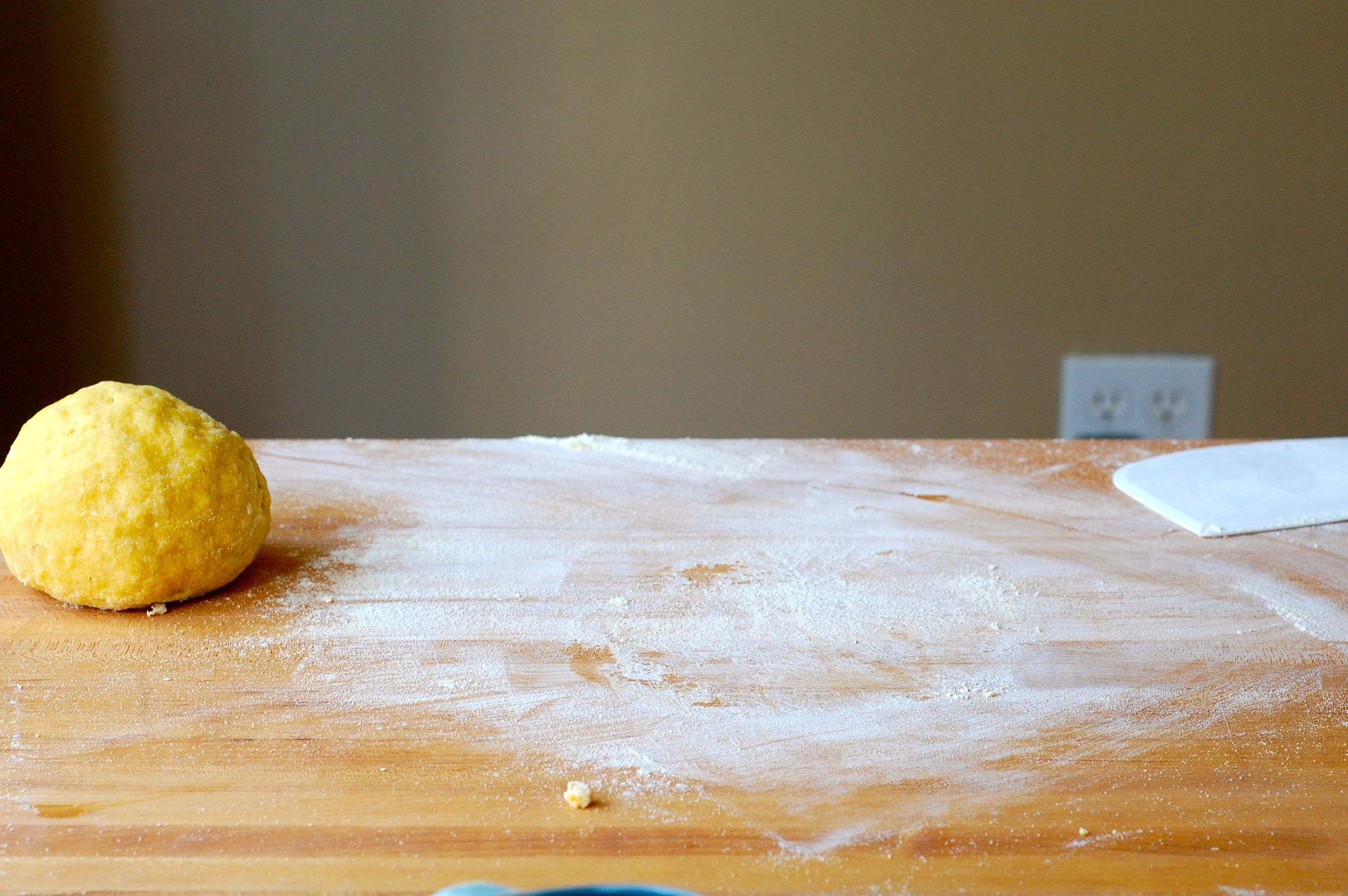 Making fresh pasta is not a task of convenience. Most of the time that I cook pasta, it is because I am hungry and need to eat something ASAP, or because I don't know what to make for dinner and don't want to shop for food (since I am hungry and need to eat ASAP). There are so many high-quality dried (and sometimes even fresh) pastas from which one can choose at the grocery store, that it can seem counterintuitive to spend extra time making something that is cheap, accessible, and near equally satisfying to the homemade version.
But for those of us who are detail-oriented, patient, and/or masochists, making pasta is innately fun and awesome, and you can get creative and make versions that you really can't find ready-made. Plus, homemade pasta communicates the "Here, I purposefully took a lot of time to make something for you that I could have pretty easily made in 10 minutes because I love you and care about you and wouldn't do this for just anyone" sentiment very clearly. Anyone who makes homemade pasta on a first date is, in my opinion, quite worthy of a second one.
Making fresh pasta is not a task of convenience. Most of the time that I cook pasta, it is because I am hungry and need to eat something ASAP, or because I don't know what to make for dinner and don't want to shop for food (since I am hungry and need to eat ASAP). There are so many high-quality dried (and sometimes even fresh) pastas from which one can choose at the grocery store, that it can seem counterintuitive to spend extra time making something that is cheap, accessible, and near equally satisfying to the homemade version.
But for those of us who are detail-oriented, patient, and/or masochists, making pasta is innately fun and awesome, and you can get creative and make versions that you really can't find ready-made. Plus, homemade pasta communicates the "Here, I purposefully took a lot of time to make something for you that I could have pretty easily made in 10 minutes because I love you and care about you and wouldn't do this for just anyone" sentiment very clearly. Anyone who makes homemade pasta on a first date is, in my opinion, quite worthy of a second one.
Fresh Pasta - adapted from Thomas Keller
I like this recipe (even though it uses a crapload of eggs compared to other recipes) because the dough is very pliable and forgiving, and not tacky or sticky. This makes it very easy to feed it through a pasta machine, or roll out on a lightly floured board without sticking and falling apart. Plus, Thomas Keller himself says there is no way you can over-knead this dough, so it is a great recipe for learning how pasta dough should look and feel without worrying about how much you're handling it in the process. TK calls for just all-purpose flour here, though I use a mix of AP and semolina for added flavor and color (you can do what you like). Using a semi-coarsely milled semolina (v. very finely milled) will yield a more rustic texture and appearance, but I really love this and think it adds character and interest to the final dish.
Ingredients:
1 cup all-purpose flour 3/4 cup semolina flour 6 large egg yolks 1 large egg 1 1/2 teaspoons olive oil 1 tablespoon milk
Method:
Step 1: Whisk together the AP and semolina flours, and pour out into a mound on your work surface.
Step 2: Make a well in the center of the flour mixture; you'll need the well to be large enough to hold the eggs, oil, and milk without any spilling over the edge of the flour.
Step 3: Place the whole egg in the well in the flour, and separate the remaining 6 eggs (tip: chilled eggs are easier to separate than room temperature eggs, as the yolk is firm when cold and less likely to break while being handled). Here, I'm using two bowls; I first break the egg into the small bowl, then fish out the yolk with my fingers and add it to the well. The whites I put in a second bowl to save for another recipe (refrigerate whites in a lidded container if not using that day).
Step 4: Add the oil and milk to the well.
Step 5: Use your fingers to break the eggs up and mix them with the oil and milk. Once combined, still using your fingers, begin turning the eggs in a circular motion within the well, being careful not to let them spill over the sides. You'll start picking up some flour a little at a time, and incorporating it into the eggs as they're turned. This will take some time, but that's okay; the slow mixing helps to prevent lumps from forming, which can affect the uniformity and pliability of the pasta during rolling, and the texture of the pasta once cooked.
Step 6: When the dough begins thickening and starts to lift itself from your work surface, use a bench scraper or pastry scraper to lift the flour up and over the dough, and cut it into the dough. Keep doing this until all or most of the remaining flour has been cut into the dough. The dough will still look shaggy (if it looks very, very dry, you may add a tiny dribble of milk here).
Step 7: Gather the dough with your hands into a ball and center the ball on your work surface. Knead the dough by pressing it, little by little, in a forward motion with the heel of your hand. Re-form the dough into a ball, and knead again. Repeat this process several times, until the dough feels moist, but not sticky.
Step 8: Let the dough rest for a moment while you clean your work surface (I just scraped off the loose dough bits, but you may need to clean it more thoroughly if you have a lot of dough stuck to your surface). Dust the clean work surface with a little flour, just so the dough won't stick.
Step 9: Knead the dough by pushing against it in a forward motion with the heel of your hand. Form the dough into a ball again and knead it again. Keep reshaping and kneading the dough in this forward motion until the dough becomes silky smooth (you'll notice a change in the way your fingers begin to move across the dough as you knead). The dough is ready when you can pull your finger through it and it wants to snap back in place. This kneading process can take a while (as much as 15 minutes, maybe more). If you're not sure if the dough is ready, keep kneading.
Step 10: Once the dough is silky and elastic, form it into a ball. Double-wrap it in plastic wrap and let it rest for at least 30 minutes and up to 1 hour before rolling it by hand or through a pasta machine. The dough may also be placed, wrapped, in the fridge if not using immediately; use the next day if possible, as the surface will oxidize over time and turn slightly grey (note: this does not affect the flavor).
Variations:
Whole-wheat pasta dough - substitute 3/4 cup whole-wheat or whole-wheat pastry flour for the semolina flour; if using whole-wheat flour, increase the milk to 1 1/2 tablespoons. Proceed with method as written.
Herb pasta dough - add 1-2 tablespoons freshly chopped herbs (such as chives, parsley, chervil, or tarragon) to the egg, oil, and milk mixture. Proceed with method as written.


